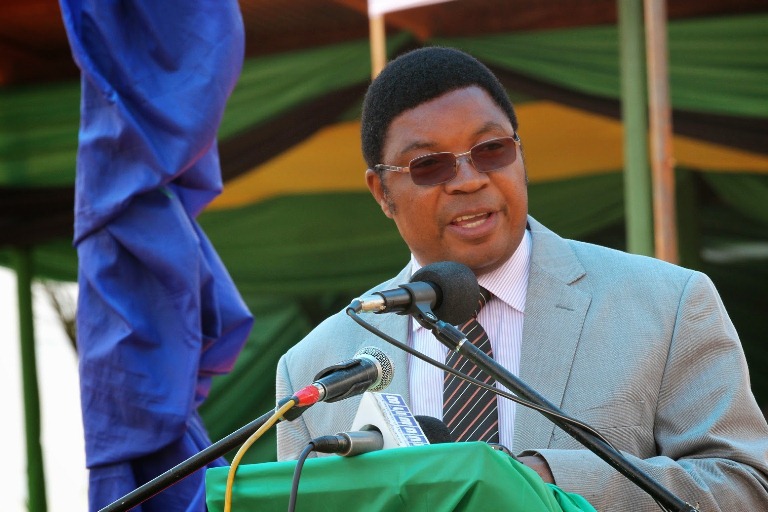Safeguarding African heritage for sustainable development

Kizito Sikuka
FROM Cape to Cairo or Yaoundé to Mogadishu, Africa has some of the most outstanding natural and cultural heritage sites that offer a variety of options for socio-economic growth, including tourism and infrastructure development. For example, between Zambia and Zimbabwe, there is the majestic Victoria Falls located on the Zambezi River.
In Egypt, the Great Pyramids stand tall, while the United Republic of Tanzania boasts of the Mount Kilimanjaro and Ngorongoro Conservation Area.
According to the General Conference of the United Nations Educational, Scientific and Cultural Organisation (Unesco), which oversees the protection of world heritage sites, a total of 89 African sites are inscribed on the World Heritage List – affirming the richness of the continent and its potential to drive its own developmental agenda.
However, the challenge facing the continent is how to strike a balance between maximising the use of these sites to promote socio-economic development, while at the same time preserving them for future generations.
Tanzanian Prime Minister Kassim Majaliwa Majaliwa told a recent International Conference on Safeguarding African World Heritage as a Driver of Sustainable Development held in Arusha that it is time Africa finds innovative ways of managing the competing environmental, social and economic dimensions of development.
He said it is sad to note that some of the poorest countries in Africa are “extremely rich in natural resources” such as oil, gas and minerals yet continue to face various challenges to exploit these resources.
Some of the challenges include limited technologies and the fact that a number of these resources are located in areas of cultural significance, which under international laws are protected from destruction.
“As Africa, we are and will continue to do our best to protect and conserve our heritage,” he said, adding that similar efforts should, however, be channelled towards finding “a balance between conservation and development,” so that the continent is able to use its resources to eradicate poverty and promote socio-economic development.
For example, he said, one way of dealing with resources found in protected areas is to come up with “innovative” ways of extracting them for the benefit of Africa, with minimum destruction to the environment.
“What if there is an appropriate technology that would allow exploitation without necessarily impairing the outstanding universal values for such sites,” he said. “If these resources are appropriately exploited, they will generate revenue to alleviate poverty among our people and at the same time foster conservation. The bottom line here is how to strike a balance for a win-win situation.”
Majaliwa urged stakeholders to continue working together to protect African heritage sites for present and future generations. This in light of the fact that some sites in the continent are under threat from a combination of factors, including armed conflicts and terrorism, uncontrolled movement of people, poaching, weak management and climate change.
Unesco estimates that about 33 percent of the sites on the List of World Heritage in Danger are located in Africa. “We need to all cooperate if we want to want to preserve African heritage for present and future generations,” Majaliwa said.
Director of the World Heritage Centre of Unesco, Mechtild Rössler concurred, saying protection of African heritage is critical to sustainable development.
She said it was also important to actively involve local communities in the formulation and implementation of decisions aimed at safeguarding heritage, as “the communities are the real custodians of the heritage sites.”
The International Conference on Safeguarding African World Heritage as a Driver of Sustainable Development that was held on 31 May-3 June issued the Ngorongoro Declaration that calls for more efforts to safeguard African heritage for sustainable development.
“We call upon the African Union and its Regional Economic Communities to promote sustainable development while guaranteeing the conservation of African Natural and Cultural Heritage in line with the AU visionary Agenda 2063,” reads part of the declaration.
The declaration urged for the active inclusion of “women and youth in the conservation and management of natural and cultural heritage.” There is also the need for Africa to develop and implement policies that prevent and resolve conflicts as well as restore peace, security and social cohesion within and outside their borders using heritage values.
Another critical issues is increasing public awareness on the benefits of safeguarding African heritage as well as harnessing indigenous knowledge on persevering heritage. The conference was aimed at exploring methods to strengthen the three dimensions of sustainable development – environmental sustainability, inclusive social and economic development – while also fostering peace and security. – sardc.net










Comments